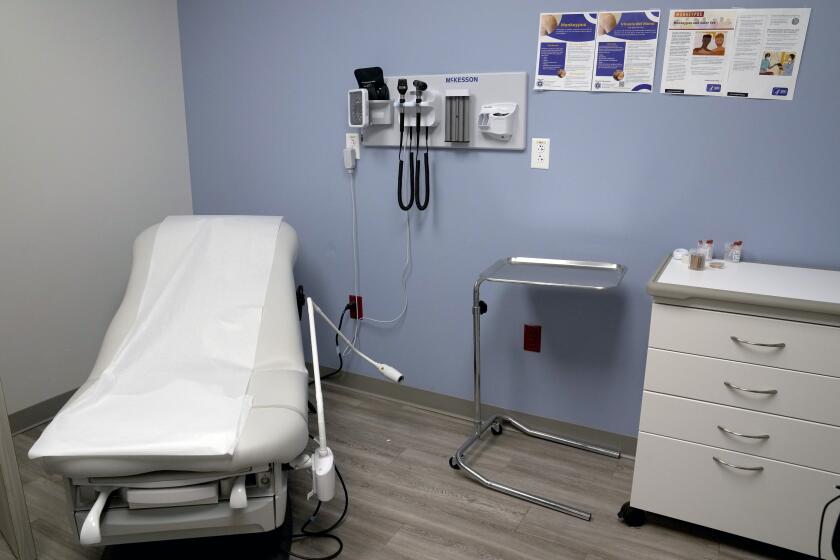Congress balks at bailout plan
In its first formal presentation to Congress, the Bush administration’s $700-billion plan to rescue the financial system was strafed from left, right and center Tuesday, with critics demanding to know why overburdened taxpayers should bail out the Wall Street firms that created the crisis.
But the storm of indignation left unanswered the question of whether Congress would dare to kill or seriously delay the only plan on the table -- and, if it did, would an economic debacle ensue?
The administration and congressional leaders are struggling to craft a bailout for the moribund financial system that is politically acceptable as well as capable of succeeding -- a plan, in other words, that takes into account both public outrage and economic reality.
Despite the torrent of criticism, much of it from Republicans, Treasury Secretary Henry M. Paulson and Federal Reserve Chairman Ben S. Bernanke steadfastly defended their proposal, contending that voters would ultimately accept it because nothing less would work.
“I share the outrage that people have. I think this is embarrassing and . . . there is a lot of blame to go around,” Paulson told the Senate Banking Committee. “But what we’re focused on right now and what I think your constituents want to hear is, ‘Let’s fix the problem in the way that is the least damaging to them.’ ”
Bernanke, rejecting assertions that the plan was tilted to benefit Wall Street, said, “My interest is solely for the strength and the recovery of the U.S. economy. I believe if the credit markets are not functioning that jobs will be lost, the unemployment rate will rise, more houses will be foreclosed upon, GDP will contract, that the economy will just not be able to recover in a normal, healthy way, no matter what other policies are taken.”
The financial system is so traumatized, Paulson and Bernanke warned, that it was no longer able to perform its most basic function: bringing together buyers and sellers. Only massive intervention in the form of a government program to buy up billions of dollars in loss-ridden mortgage-backed securities can end the paralysis, they said.
Paulson described the plan as akin to a line of credit that the Treasury Department could use to invest in mortgage-related debt. The entire $700 billion would not necessarily be used, he said, and over time the assets would gain value.
“This is not an expenditure. This is an investment,” he said. “And as the economy grows, as housing corrects, these assets should appreciate in value. The cost to the taxpayer will be far below what is invested in the assets.”
And with the clock ticking down on the scheduled congressional adjournment at the end of the week and the election drawing nearer, even many on Capitol Hill quietly agreed that refusing to act was not an option.
“You cannot just sit by and let this thing crash,” said Sen. Dianne Feinstein (D-Calif.), who reported that her office had been swamped by 15,000 calls since the crisis began. But she said she was not yet sold on the plan: “How do I know this will work? I don’t.”
Democratic congressional leaders, who continued their efforts to negotiate a compromise with the administration, admitted privately that they had been thrown off course by the vehemence of the opposition.
By Tuesday night, it was no longer certain that a version of the Paulson-Bernanke plan could win passage, even if it included such sweeteners as more help for homeowners and caps on compensation for executives of companies that take part in the bailout.
The tension was on display at a closed-door meeting at which Vice President Dick Cheney and a fire brigade of other administration officials tried to rally support among House Republicans, including a large number of the GOP rank and file. After the meeting, Rep. Wally Herger (R-Chico) said, “I don’t know anyone who’s sold on this rescue plan.”
Rep. John Campbell (R-Irvine), a conservative who describes the bailout as necessary, said, “Some of the resistance comes from the fact that the public is not convinced of this yet.”
“There’s still a perception in the public that this is a bailout of Wall Street, which it is not,” Campbell said. “It’s a bailout of the financial system, which allows every person with a bank account to trust their bank. . . . I don’t think people fully understand the consequences of doing nothing.”
Beyond the political challenge, Paulson and Bernanke offered their first full-fledged answer to a question asked by some outside experts: Why does the Treasury intend to buy toxic assets instead of lending companies money to help them survive while they dispose of the assets in the market?
The two officials said the point of the plan was not to relieve troubled companies of their financial burden. Instead, the goal is to attack a more fundamental problem: helping the markets regain the ability to set prices for these assets. To do that, they said, Washington must reboot the buying-and-selling process.
For that reason, they added, it would be detrimental to add several provisions popular with lawmakers.
For instance, Paulson and Bernanke said they opposed proposals that would give the government the right to buy stock in the firms that got help so taxpayers could profit from the companies’ recovery and that would require participating firms to cap executive pay.
Such provisions, they said, could mean that only troubled firms would be willing to participate, making the resulting sale prices suspect in the market.
“We cannot impose punitive measures on the institutions that choose to sell,” Bernanke said. “That would eliminate or strongly reduce participation and cause the program to fail.”
That goal also helps explain Bernanke’s call for the government to pay a reasonable price for the assets it buys, rather than the lowest price it can get.
If the Treasury pays a higher price, the central banker said, “Credit markets should start to unfreeze. New credit will become available to support our economy.”
Lawmakers struggled to understand the theory. But they kept returning to their central point -- that $700 billion is a big bet for the American taxpayer to make on a proposal that’s hard to understand.
One immediate casualty of the hostility to the plan was a lobbying campaign by major business organizations, including the U.S. Chamber of Commerce. They began the day working on a list of legislators they hoped to persuade to support the plan. By midafternoon, opposition was so widespread on Capitol Hill that the business lobbyists suspended operations.
“Last Friday I thought we would have the results all set by Wednesday,” said R. Bruce Josten, vice president of the chamber.
“I still think it’s going to come together,” he said. But he indicated that until congressional leaders and the Bush administration settled on details of a plan, there was little for his group to do.
Other organizations made a plea for greater homeowner support.
“There is a lot of talk about how some institutions -- most recently AIG -- are just too big to be allowed to fail,” said Nancy Zirkin, executive director of the Leadership Conference on Civil Rights. “That may be true. But this country is made up of millions of small homeowners who can’t be allowed to fail either.”
--
richard.simon@latimes.com
peter.gosselin@latimes.com
Times staff writers Nicole Gaouette and Tom Hamburger contributed to this report.
More to Read
Get the L.A. Times Politics newsletter
Deeply reported insights into legislation, politics and policy from Sacramento, Washington and beyond. In your inbox three times per week.
You may occasionally receive promotional content from the Los Angeles Times.






